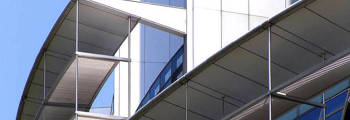09/12/2020
The case of Calor and Singh v Highways England examines liability for the collapse of roadside trees.
The Court’s Decision
On 18 December 2013, a 17m tall lime tree collapsed from the central verge of the A45 into the path of a car, injuring the Claimant motorist and passenger. The Court found that Highways England was liable, because an inadequate system of tree inspection had failed to identify the foreseeable risk of the tree’s failure.
The Arguments
At the trial the Court rejected the argument the statutory duty to maintain the highway under s41 of the Highways Act 1980 applied to inspections of the tree. The tree was not an extension, integration or simulation of the fabric of a highway. Instead it was part of the soft estate of the highway. The court accepted that if s41 had engaged, then the burden of proof would have been on Highways England to establish the s58 statutory defence, and the Claimant would not have needed to prove causation.
The common law duty in negligence and nuisance in relation to trees is detailed in the cases of Cavenagh v Witley Parish and Stagecoach South Western Trains v Hind. There is a duty to carry out regular visual inspections of trees to identity, and then make safe, observable dangers. In some cases, depending on the risk and available resources, a fuller inspection by an arboriculturalist would be required.
Comparisons were drawn in the current claim with Witley Parish Council, where a large mature tree had collapsed onto a bus, causing severe injuries to the driver. The tree was in a high-risk zone and presented a significant potential hazard. The Court concluded that the Council should have conducted inspections every two years, not three years as was their practice.
In the current case the court found that Highways England was in breach of its common law duty. The three-year inspection interval was insufficient. A driven inspection by a qualified arboriculturalist, which took place on 19 February 2013, was not carried out in a manner which was either competent or adequate. The tree was old, in a dangerous position, susceptible to infection, liable to become unstable, and likely to cause significant damage if it failed.
Low-level shoots should have been cleared as part of a walked inspection. Fruiting bodies of a fungus would have been identified, which rendered the offending tree unstable. The danger would have been removed, probably by having the tree felled.
The Court also drew adverse inferences from the fact the contractor who undertook the inspection on 19 February 2013 was not available as a witness.
Comment
The court recognised the compelling biodiversity and aesthetic reasons to have our main carriageways lined with trees, although they can also present a hazard to road users.
The case acts as a reminder to public authorities of the need to implement, and document in detail, a system of inspection of their trees, which properly takes into account the risks posed by reference to the size, location and particular characteristics of the trees. Public authorities may have to consider conducting more frequent and detailed inspections of large roadside trees. This is no doubt challenging, given the competing demands on resources.



